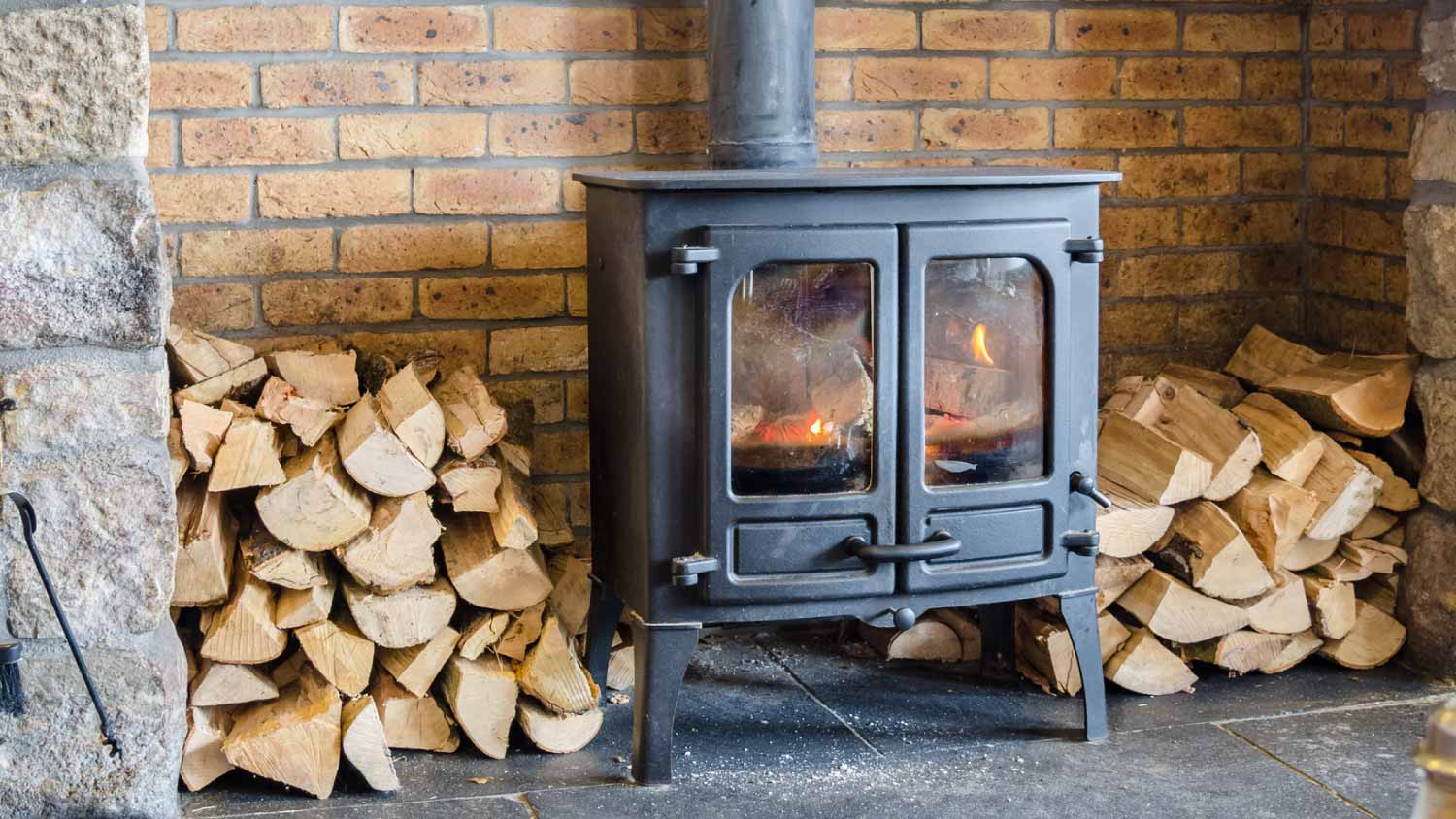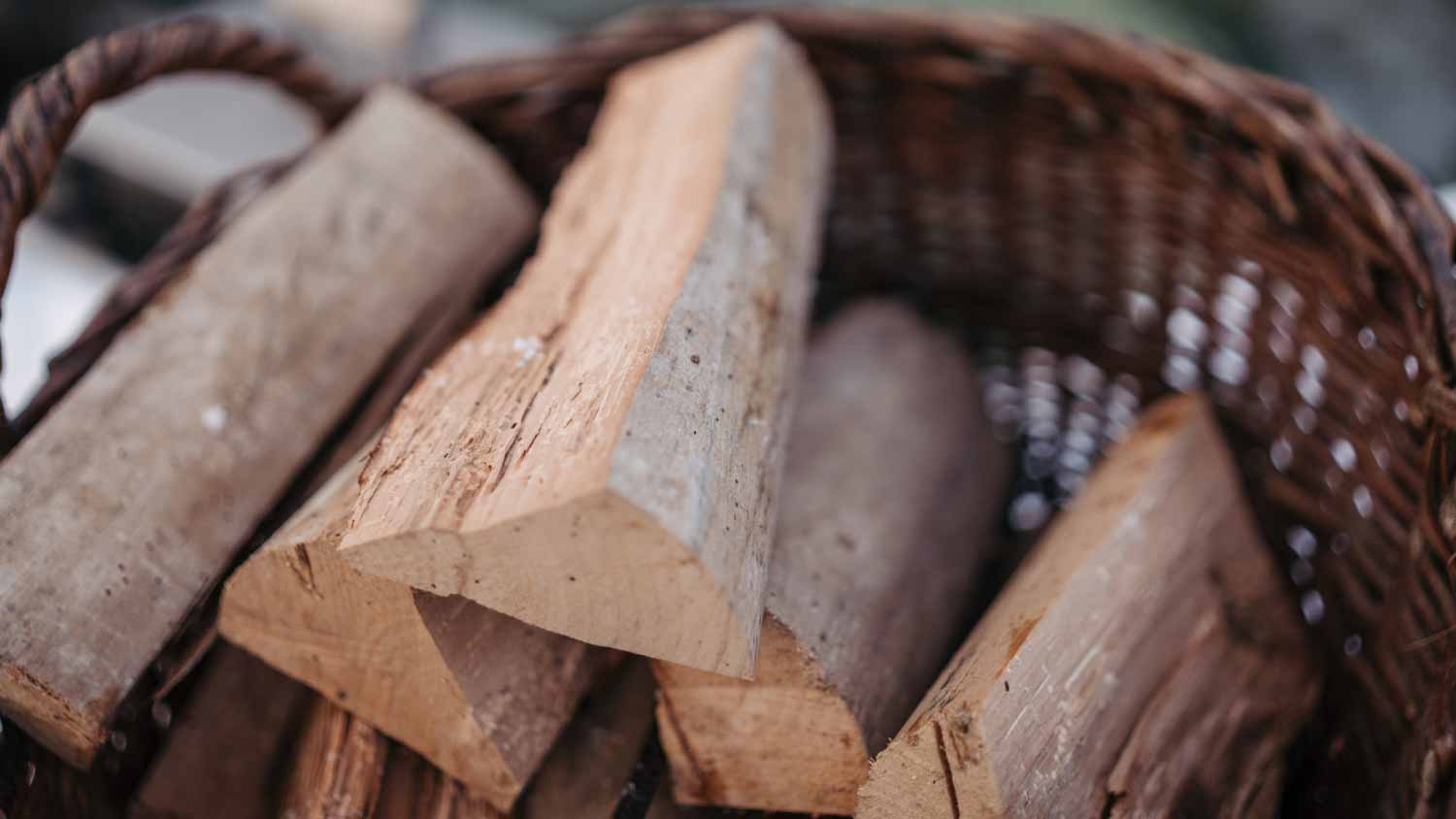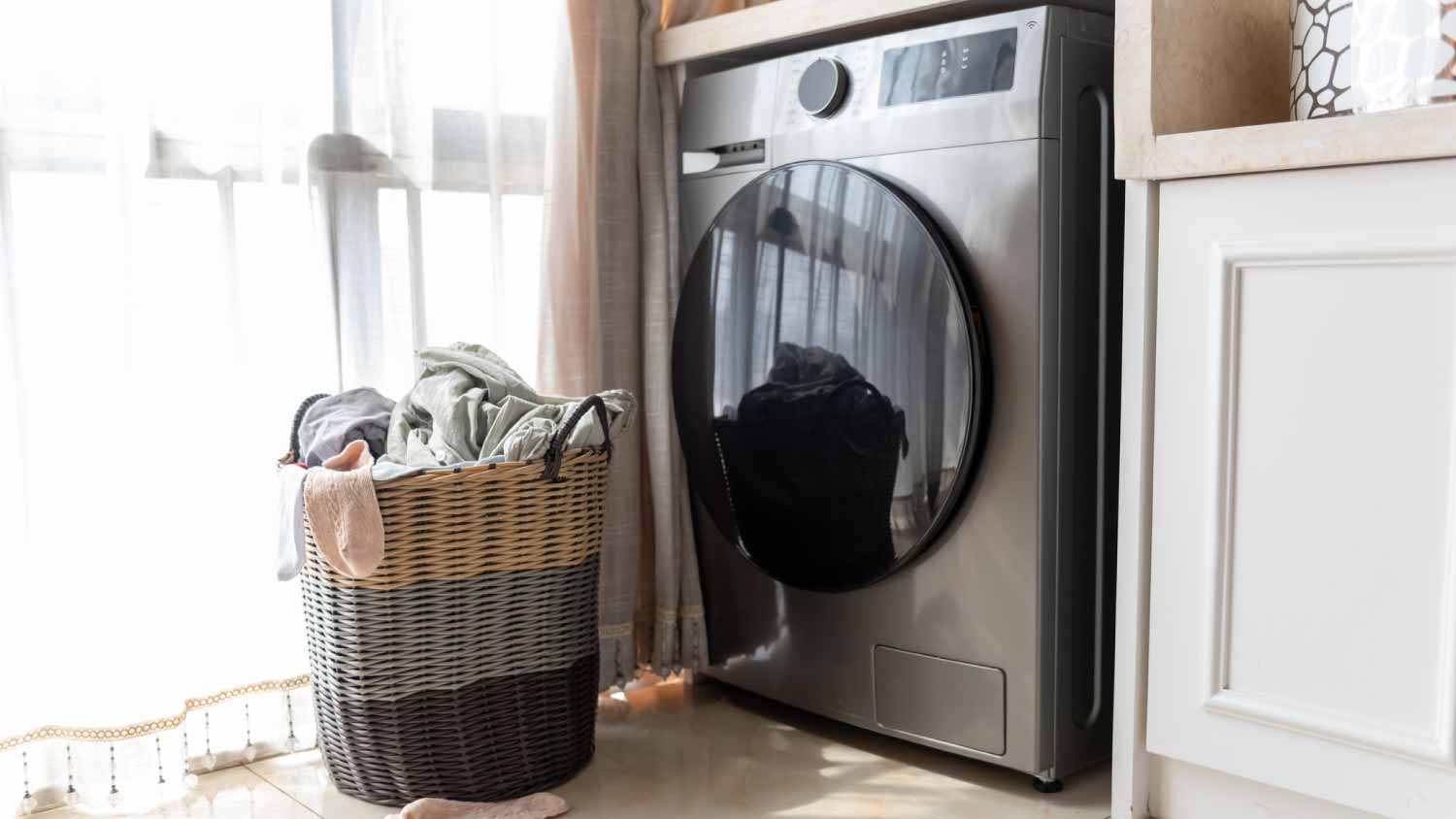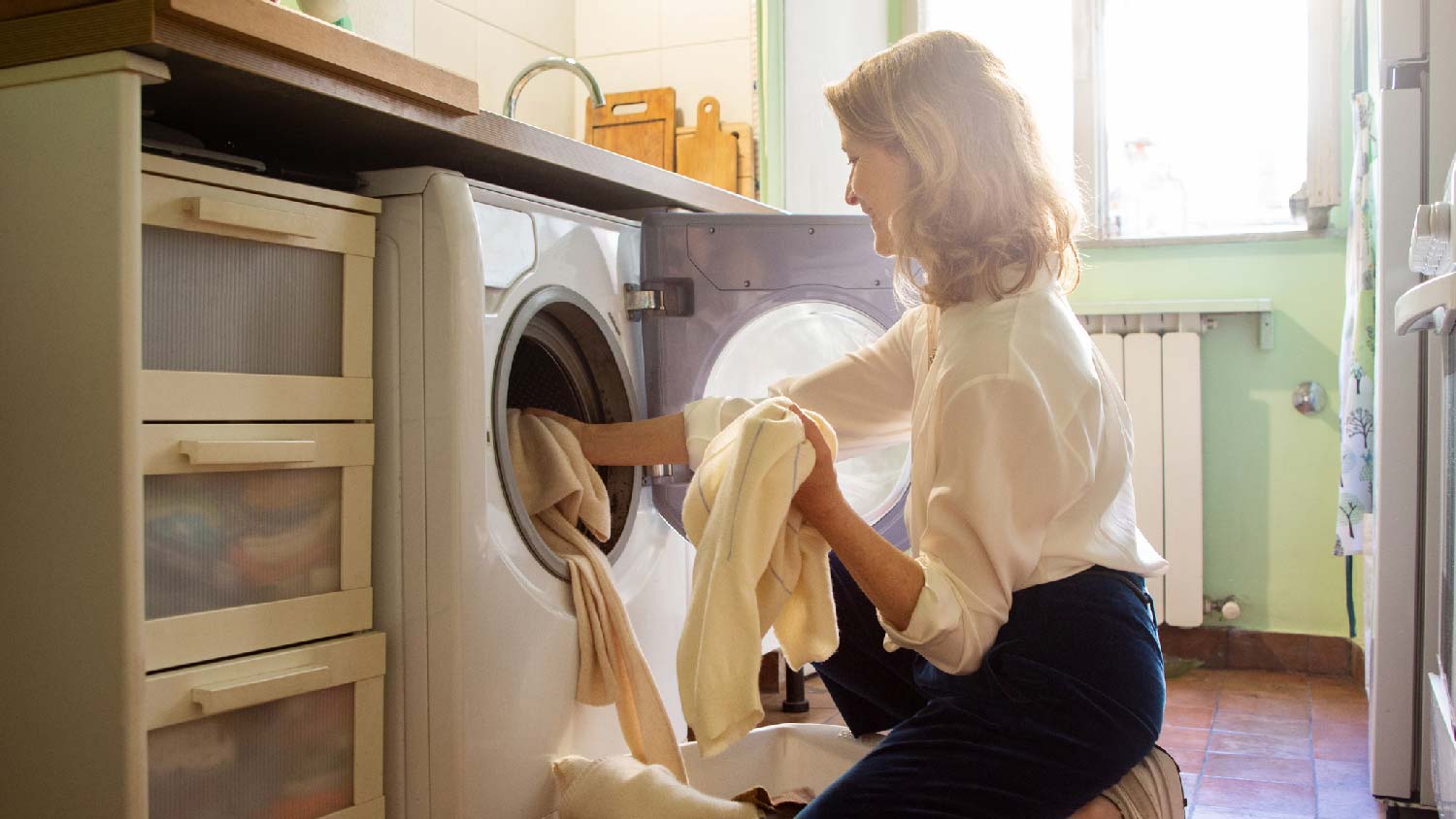Why Is My Wood Burning Stove Smoking? 4 Reasons Why
Figure out what the smoke is all about


Your wood burning stove is likely smoking due to an incorrect baffle position.
Other culprits include chimney issues and bad firewood.
Your gas oven repair specialist can help identify the problem.
Call a pro if you suspect a chimney blockage.
You sit down for a warm, cozy night by the fire, but instead of a relaxing crackle, you get a plume of smoke your way. If your wood burning stove is puffing out more smoke than a bonfire and you’re wondering “why is my wood burning stove smoking,” it’s time to consider a number of factors that could be causing a smoky stove. We’ve got answers and solutions so you can (literally) clear the air.
1. Incorrect Baffle Position
Located at the top of the firebox inside your stove, a chimney baffle traps heated air and waste gases inside the firebox to produce as much heat as possible. It’s typically angled up toward the front of the stove. But if its position is altered, it can cause the stove to smoke instead.
How to Fix It
The following steps can help put your chimney baffle back in the right position:
Let the stove cool completely.
Open the stove and locate the baffle (typically a metal plate near the top inside of the stove).
Lift and slide the baffle back into its brackets or supports.
Test the stove by lighting a fire and checking the smoke draw.
If the smoke persists, you may need to call a professional to inspect it.
2. Chimney Issues
Chimney blockages and improper chimney height can lead to the production of smoke in your wood burning stove. If you notice smoke coming from the log burner in your stove, that’s a good indication that you have a chimney blockage on your hands—a danger that should be addressed immediately as it could cause the release of carbon monoxide.
Short chimneys can pull smoke back in through your log burner since they don’t have the right amount of suction to draw the smoke up. On the flip side, a chimney that’s too tall will cause the smoke to cool as it travels upwards, leading it to sink back down.
How to Fix It
To break up blockages and prevent them from happening in the future, it’s best to have your chimney sweeped on a regular basis. The cost of a chimney sweep usually falls between $130 and $380, depending on its size and condition. If an improper chimney height is the issue, you’ll likely need to consult a brick mason to see what they recommend as a solution.
3. Strong Winds
If you live in a remote area that’s prone to severe weather, strong winds could make it hard for flue gases to exit, which could cause smoke to come back down your chimney and into your home.
How to Fix It
Although you can’t control the weather, you can have a chimney cowl fitted to help prevent winds from pushing gas back down into your stove. Your local gas oven repair specialist can take a look at your gas stove and determine what type of cowl is best and have it installed.
4. Bad Firewood

Only seasoned, untreated wood should be used in your stove, as burning wet or chemically treated wood can release toxic gas into the air and lead to excess smoke. Plus, wet or chemically treated wood can lead to blockage since it produces sludge in your stove. The moisture level of your firewood should be no more than 20%.
How to Fix It
Remove bad firewood from your stove and dispose of it properly. You may also need to clean your stove after using wet or chemically treated wood so the remnants don’t lead to more smoke. Only use dry, untreated wood when burning your stove in the future.
When to Call a Pro
Once you’ve ruled out common, easy-to-fix problems that could cause your wood burning stove to smoke, it may be time to call a professional for help. This is especially true if you notice a strong creosote smell, chimney draft issues, broken components, or structural issues with your chimney or flue. Depending on the type of fireplace you have and its size, the cost to repair a fireplace ranges from $180 to $1,020. A stove repair specialist can help determine where you fall in that estimate.
Frequently Asked Questions
You should clean your chimney at least once a year, depending on how old it is and how often you use your fireplace. Regular cleaning helps reduce creosote buildup, which can lead to chimney fires. Consider having your chimney cleaned twice a year if you use your fireplace frequently, especially during the winter.
The most common sign of a carbon monoxide leak is the visible black soot marks on the walls near your wood stove. An excess accumulation of smoke in other rooms of your home could also indicate that your wood burning stove is leaking carbon monoxide. If you notice either of these signs or are still unsure, it’s best to leave the premises and contact your fire department to check your home’s levels.





- Appliance Repair Companies
- Washing Machine Repair
- Dryer Repair
- Refrigerator Repair
- Dishwasher Repair
- Oven Repair
- Wood & Pellet Stove Repair
- Freezer Repair Services
- Wood Stove Services
- Gas Stove Repair
- Emergency Appliance Repair Companies
- Ice Maker Repair
- Gas Appliance Repair
- GE Appliance Repair
- GE Refrigerator Repair
- GE Dryer Repair
- GE Dishwasher Repair
- GE Washing Machine Repair
- Samsung Appliance Repair
- Samsung Refrigerator Repair
- Samsung Dryer Repair
- Samsung Washer Repair
- Samsung Dishwasher Repair
- Samsung Oven Repair
- Whirlpool Repair
- Whirlpool Refrigerator Repair
- Whirlpool Washer Repair
- Whirlpool Dryer Repair
- Whirlpool Oven Repair
- Maytag Appliance Repair
- Maytag Refrigerator Repair
- Maytag Washer Repair
- Maytag Dryer Repair
- Maytag Dishwasher Repair
- Kitchenaid Appliance Repair
- Kitchenaid Oven Repair
- Kitchenaid Refrigerator Repair
- Kenmore Appliance Repair
- Kenmore Dishwasher Repair
- Kenmore Washer Repair
- Kenmore Dryer Repair
- LG Refrigerator Repair
- Bosch Appliance Repair
- Kenmore Refrigerator Repair
- LG Appliance Repair Services
- GE Microwave Repair
- Electrolux Appliance Repair
- Electrolux Washer Repair
- Kitchenaid Dishwasher Repair Services
- Wood Stove Inspection
- Dishwasher Installation
- Trash Compactor Repair



.jpg?impolicy=leadImage)






